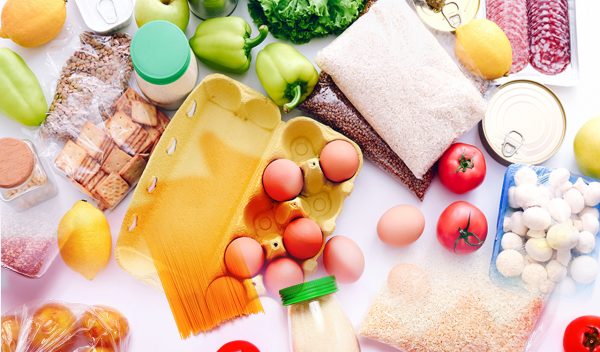
More and more reasons are being given to continue the debate as to whether a reduction in VAT on food could also lead to lower prices on the “shelf”. The government, which completely rejects this possibility, has found an ally in the report of the Parliamentary Budget Office, published yesterday. Nothing more and nothing less. Contrary to the market (food industry and supermarkets) and the opposition, the office sees through its own analysis that the benefit from this reduction will be small and temporary.
Wages: How inflation is eating away at income
Value added tax: office arguments
As he points out, “After a comprehensive analysis of a number of products in 27 EU member states regarding the effects of changes in VAT (increases and decreases) on final consumer prices, three interesting findings emerged.
FirstlyHowever, only a small portion of the VAT reductions, around 6%, are spread to final prices and only in the short term. Conversely, VAT increases are spread to final prices by around 34%. In addition, restoring VAT rates leads to disproportionate price increases, which is at the expense of consumers.
secondlyAfter a period of 10 months after the VAT reduction, consumer prices return to the levels they were before the reduction. Third, VAT cuts appear to increase business profit margins at the expense of consumers.
ThirdVAT cuts appear to increase business margins at the expense of consumers.
Of course, on the other hand, according to the office, in a smaller-scale study, which does not address VAT increases, and relates only to Norway, the permanent reduction of VAT, as part of the tax reform, was made from 24% to 12%. In July of 2001 in food products, it led to a decrease in the final consumer price approaching a reduction in value-added tax.
What does the example of Spain show regarding VAT?
Beyond that, there is…the neighboring example of Spain, which was also concerned with the Greek public sphere. The office goes on to say that “the first results of a study focusing on the example of Spain show that the almost complete spread of the VAT reduction in the first months declines significantly within a quarter. Taking into account the above and the conditions of competition in the Greek market, in relation to the Spanish market.” The Bureau estimates that any impact on final consumer prices from the VAT reduction in Greece, if any, is expected to be smaller or larger and shorter-lived than that in Spain.
As stated in the office’s report, “A recent study conducted by the Bank of Spain monitored the evolution of consumer prices in selected products as the Spanish government, as of January 1, 2023, reduced prices.”
VAT from 4% to 0% and from 10% to 5%. The initial results of the study, based on preliminary data for the first six months (from 1/1/2023 to 31/7/2023), show an almost complete spread of VAT reduction during the first months, but it declines significantly during the quarter to about 60%.
And other countries followed suit.
The VAT cut was one of the fiscal measures used by various European governments to mitigate the effects of recent economic shocks – such as the Covid-19 pandemic, the resulting supply disruptions and the ongoing war in Ukraine. In fact, Spain, Portugal, Cyprus and Poland have begun to reduce or eliminate value-added tax on basic foodstuffs.
In Spain in particular, the measure was originally scheduled to end after six months, on June 30, 2023, but was kept in place until this summer after inflation proved stubborn and is expected to be extended again.
Benefit for families
In Spain, VAT was reduced from 4% to 0% on basic food items such as bread, milk, cheese, eggs, fruits, vegetables, pulses and cereals. In other groups, such as oils and pasta, the value-added tax was cut in half, from 10% to 5%.
The Spanish government estimated that this reduction in VAT resulted in savings of €1.32 billion for Spanish households in fiscal year 2023 (according to the Spanish Ministry of Economy, Trade and Enterprise). However, the main condition for the effectiveness of this measure was that supermarkets pass the lower tax through to final prices.
What happened to the “shelf”?
The research conducted by economists at the Spanish Bank also looked at how quickly and to what extent the VAT reduction is integrated into final prices in different categories of food: fresh and processed, branded and private label, imported and local. The result was that all products on average transferred the VAT reduction to retail prices by between 70% and 100% over time, but with a different response rate. Overall, although retailers were 90% committed to the VAT reduction as of the first three weeks, it took about 2.5 months for the pass-through rate to reach 100%, after which “the impact of the VAT reduction on the prices”. “To 70%.

“Avid problem solver. Extreme social media junkie. Beer buff. Coffee guru. Internet geek. Travel ninja.”






More Stories
“Recycling – Changing the water heater”: the possibility of paying the financing to the institution once or partially
Libya: US General Meets Haftar Amid Tensions Between Governments
New tax exemption package and incentives for business and corporate mergers..